Viscous flow in Python
Purpose
In this exercise you will apply the Newtonian (linear) and non-Newtonian (nonlinear) viscous flow equations to make plots of horizontal and vertical velocity profiles in glaciers. It is based on a MATLAB exercise provided by Prof. Todd Ehlers at the University of Tübingen, Germany.
Overview
As we’ve seen previously, most landforms on Earth are sculpted by the flow of fluids across the landscape. Erosion by glaciers can significantly change the Earth’s surface, moving vast quantities of material from high elevations to lower elevations. Glacial landscapes are unique and clearly reflect erosion by processes that differ greatly from those found in fluvial systems. To understand how material is moved within glacial systems, it is important to first understand the dominant controls on glacier velocities.
Non-Newtonian flow in open channels
Background
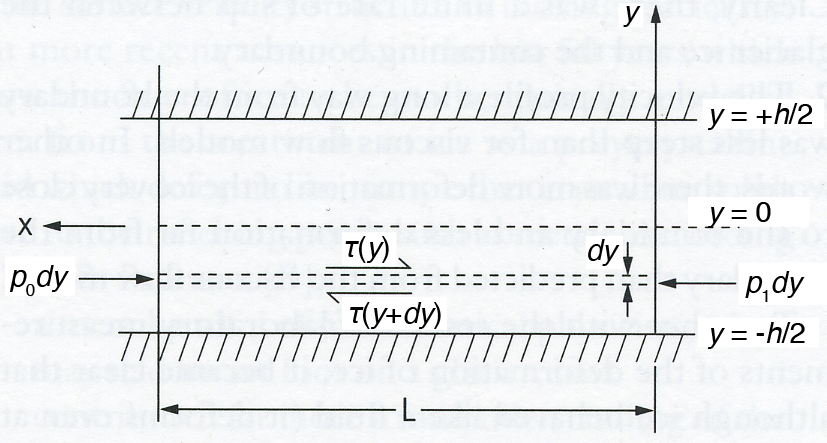 Figure 1. Schematic diagram of pressure-driven flow in a channel.
Figure 1. Schematic diagram of pressure-driven flow in a channel.
The viscosity of ice depends on both temperature and stress. For simplicity, we’ll consider the case where viscosity is only a function of shear stress. Consider a channel of width h centered about y = 0, with lateral boundaries at y = ±h/2 (Figure 1). A pressure gradient Δp = p1 - p0 drives flow within the channel of length L. The shear stress in the fluid depends on the applied pressure gradient and the distance from the channel boundaries
Unknown macro: mathdisplay. Click on this message for details.
where τ is the shear stress. We know that for Newtonian fluids
Unknown macro: mathdisplay. Click on this message for details.
where η is the dynamic viscosity of the fluid. Substituting the right side of Equation 2 into the left side of Equation 1 we find
Unknown macro: mathdisplay. Click on this message for details.
Integrating Equation 3 twice we get
Unknown macro: mathdisplay. Click on this message for details.
Since we know du/dy = 0 at y = 0, we find c1 = 0, and because we assume zero slip at the boundaries of the channel (u = 0 at y = ±h/2), c2 = (1/2η)(dp/dx)(h/2)2. Thus,
Unknown macro: mathdisplay. Click on this message for details.
This is the velocity profile for a Newtonian fluid, but as you will recall, we learned that ice is a non-Newtonian (nonlinear viscous) fluid. As such, the behavior should be modeled using a power-law, where the strain rate is a related to the shear stress as follows
Unknown macro: mathdisplay. Click on this message for details.
where a is a function of the viscosity and temperature (we will ignore temperature for now), and n is the power-law exponent. If we solve Equation 7 in terms of τ, we can substitute the result into Equation 1 to get
Unknown macro: mathdisplay. Click on this message for details.
Assuming symmetry about the center line, y = 0, and integrating we see
Unknown macro: mathdisplay. Click on this message for details.
Now integrate Equation 9 and assume u = 0 at y = ±h/2
Unknown macro: mathdisplay. Click on this message for details.
The mean velocity in the fluid is
Unknown macro: mathdisplay. Click on this message for details.
We can calculate a non-dimensional velocity now by dividing the velocity at any point in the channel by the mean velocity
Unknown macro: mathdisplay. Click on this message for details.
Exercise 1 - Planform flow velocity across a glacier
Files for this exercise
The goal of this exercise is to calculate horizontal velocity profiles across a glacier for Newtonian and non-Newtonian fluid flow resulting from a pressure gradient.
- Modify the Python script file to plot the non-dimensional velocity (u/u̅) of a fluid as a function of non-dimensional distance (y/h) across the channel of width h (Equation 12). Assume the flow is symmetrical about y = 0 and the velocity is zero at the boundaries of the channel. In your Python script you should
Solve for the non-dimensional velocity across the channel for a Newtonian fluid and for non-Newtonian fluid with power-law exponents of n = 2, 3, 4, 5
- Create one plot of the non-dimensional velocity of all of the fluids as a function of non-dimensional distance.
- Be sure to label your axes and add a title
- Also include text labels beside each velocity profile listing the power-law exponent
- How sensitive is the velocity to the power-law exponent? What is the maximum percent difference in velocity between n = 2 and n = 4?
- Include clear comments that explain what each section of your code does
The Saskatchewan glacier near Banff in Alberta, Canada (Figures 2-4) is 1400 m wide and part of a large ice field known as the Columbia Icefield.
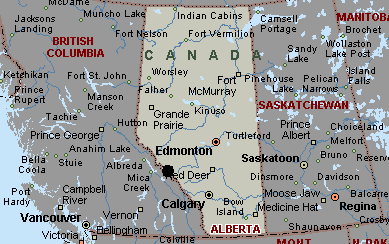
Figure 2. Map of western Canada with the location of the Saskatchewan glacier in Banff, Alberta indicated with a filled black circle.
(Source: Microsoft MapPoint 2004)
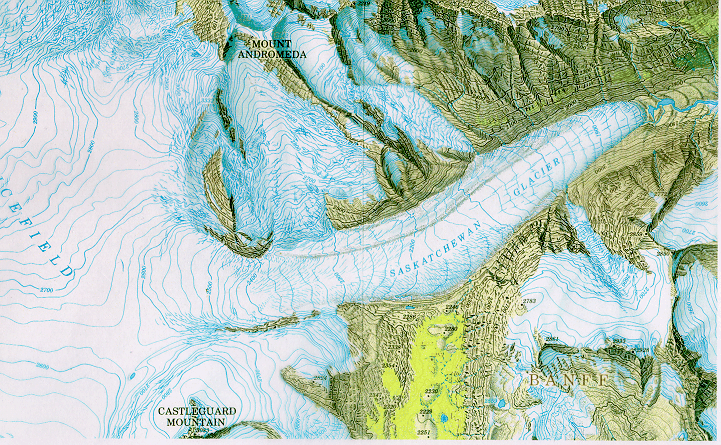
Figure 3. Topographic map of Saskatchewan glacier.
(Source: http://earth.esa.int/workshops/fringe_1996/cumming/loadmap.htm)
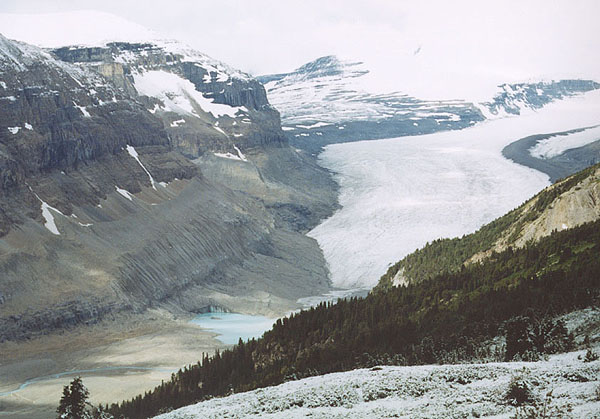
Figure 4. Saskatchewan glacier from Parker Ridge.
(Source: http://www.giorgiozanetti.ca/rockies_2002/banff_large.html)Velocity
Distance from center line [m]
[m/a]
[m/s]
-660
12
3.80E-07
-640
22
7.00E-07
-570
42
1.33E-06
-460
63
2.00E-06
-220
74
2.35E-06
40
76
2.41E-06
180
74
2.35E-06
260
72
2.28E-06
500
51
1.62E-06
Table 1. Velocity measurements across the Saskatchewan glacier.
The file contains a series of surface velocities measured at various locations across the glacier (Table 1). Modify the Python script to plot the measured velocities as a function of distance from the center line of the glacier, and also plot predicted velocity profiles for several non-Newtonian fluids (Equation 10). Assume a = 5 × 10-24 Pa-3 s-1. In your program you shouldSolve for the velocity profile of a non-Newtonian fluid with power-law exponents of n = 2, 3, 4, 5
- Load the observed velocity data
- Plot the measured velocities along with the 4 predicted velocity profiles. Be sure to label your axes and include a title. Also include text labels beside each velocity profile listing the power-law exponent.
- Include clear comments explaining what each section of the code does.
For exercise 1 you should submit
- 2 Python plots
- Non-dimensional velocity profiles for Newtonian and non-Newtonian fluids (Part 1 above)
- Velocity profile across the Saskatchewan glacier with points showing the measured velocities (Part 2 above)
- Copies of your modified Python scripts that produce the plots
- Figure captions for each plot describing the plot as if it were in a scientific journal article.
- For the second plot, list the most likely power-law exponent n for the Saskatchewan glacier in the caption text
Non-Newtonian flow down an inclined plane
Background
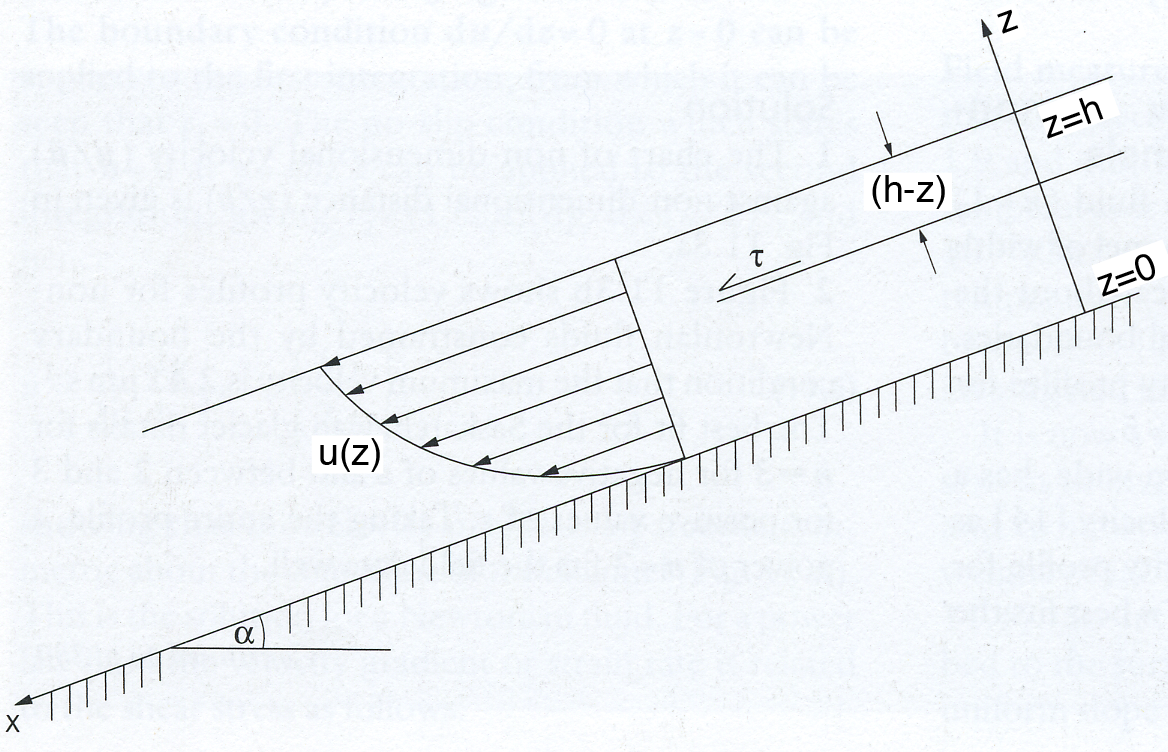 Figure 5. Schematic diagram of a viscous fluid flowing down an inclined plane.
Figure 5. Schematic diagram of a viscous fluid flowing down an inclined plane.
The velocity of a fluid flowing down an inclined plane can be modelled using some basic physical relationships. First, recall that the basal shear stress for a fluid flowing down an inclined plane is due to the down slope component of the weight of the overlying fluid
Unknown macro: mathdisplay. Click on this message for details.
where ρ is the fluid density, g is the acceleration due to gravity, h is the thickness of the fluid perpendicular to the inclined plane and α is the angle of the plane with respect to horizontal. At any distance z above the bed
Unknown macro: mathdisplay. Click on this message for details.
where γx = ρgsin(α) is the downslope component of the gravitational force. Combining Equation 2 with Equation 14 we find the constitutive equation for a Newtonian fluid is
Unknown macro: mathdisplay. Click on this message for details.
Integrating Equation 15 yields
Unknown macro: mathdisplay. Click on this message for details.
where c1 = 0 from the boundary condition u = 0 at z = 0. Equation 16 can be rewritten as
Unknown macro: mathdisplay. Click on this message for details.
For a non-Newtonian fluid, Equation 14 can be modified to account for the case where the strain rate varies as a power of the shear stress (Equation 7)
Unknown macro: mathdisplay. Click on this message for details.
To determine the velocity profile, we need to integrate Equation 18. If we use the boundary condition that the basal sliding velocity is equal to ub rather than zero, we get
Unknown macro: mathdisplay. Click on this message for details.
Exercise 2 - Vertical velocity profile in a glacier
Files for this exercise
The goal of this exercise is to calculate vertical velocity profiles across a glacier for Newtonian and non-Newtonian fluid flow resulting from a gravitational forces on the glacier.
The Athabasca glacier (Figures 6, 7) is another glacier in the Columbia Icefield (see Figures 2, 3 for location).
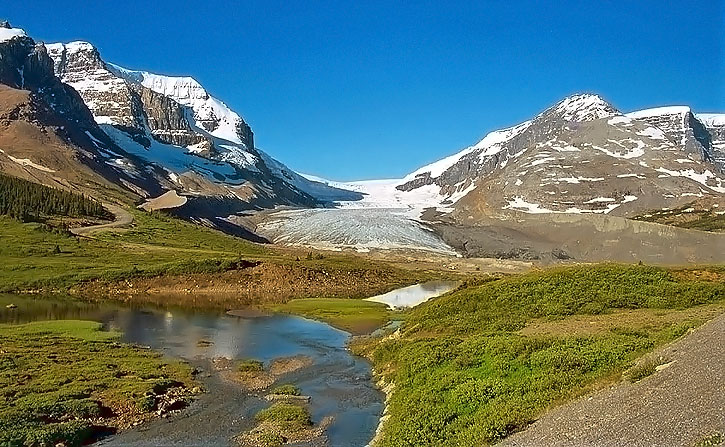
Figure 6. Athabasca glacier landscape.
(Source: http://www.pbase.com/image/27382295)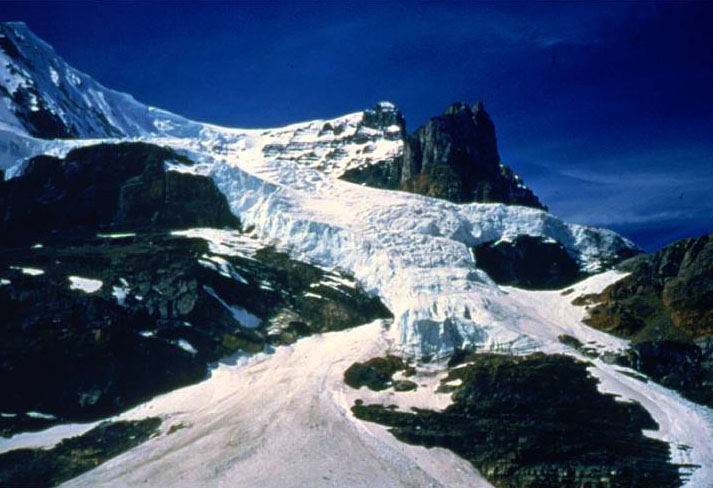
Figure 7. Athabasca glacier landscape.
(Source: http://www.canadianheritage.org/reproductions/23026.htm)Depth from surface
Height from base z
Horizontal velocity
[m]
[m]
[m/a]
[m/s]
0
209
28.6
9.10E-07
15
195
28.5
9.00E-07
30
180
28.5
9.00E-07
45
165
28.4
9.00E-07
60
150
28.2
8.90E-07
75
135
28.0
8.90E-07
90
120
27.7
8.80E-07
105
105
27.2
8.60E-07
120
90
26.5
8.40E-07
135
75
25.5
8.10E-07
150
60
24.0
7.60E-07
165
45
21.5
6.80E-07
180
30
17.5
5.50E-07
195
15
10
3.20E-07
209
0
4
1.30E-07
Table 2. Velocities measured from a vertical profile through Athabasca glacier.
A vertical velocity profile for the Athabasca glacier has been measured and the measurements are in the file (Table 2). Modify the provided Python script to plot the velocity measurements (x-axis) versus the height (z-axis) from the bed. On the same plot, include Newtonian and non-Newtonian fluid flow profiles as well (Equation 19). Assume a = 5 × 10-24 Pa-3 s-1. In your code, you shouldSolve for the velocity profile for a Newtonian fluid. Your profile should have a no-slip basal boundary condition (ub = 0) and honor the observed surface velocity.
- Solve for the velocity profiles of non-Newtonian fluids with power-law exponents of n = 2, 3, 4, 5 (Equation 19). You should set ub equal to the observed value (Table 2) and your Python program should honour the observed surface velocity (see tip above)
- Load in the observed velocity profile data
- Generate a plot of the observed velocity values, the predicted Newtonian velocity profile and the 4 non-Newtonian velocity profiles
- Include clear comments that explain what each section of the program does
For Exercise 2 you should submit
- One Python plot of the Newtonian and non-Newtonian velocity profiles across the Athabasca glacier with data points showing the measured velocities
- A copy of your Python script that produces the plot
- A figure caption for the plot describing the plot as if it were in a scientific journal article.
- In the caption you should list the most likely value for the power-law n exponent for the Athabasca glacier.